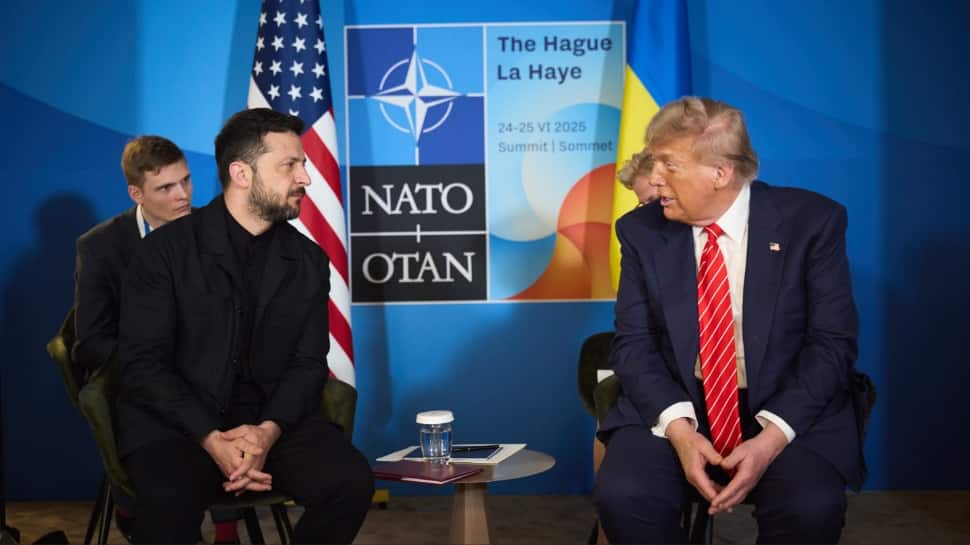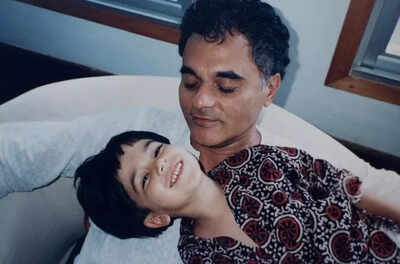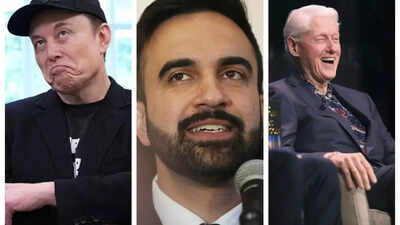Trump, Zelenskyy Hold Talks On Air Defense And Drone Cooperation At NATO Summit | World News

New Delhi: Ukrainian President Volodymyr Zelenskyy and US President Donald Trump held a significant meeting on the sidelines of the NATO Summit in The Hague, discussing critical defense issues and military cooperation. Their conversation focused on strengthening Ukraine’s air defense systems amid continued Russian missile and drone strikes.
Zelenskyy expressed Ukraine’s readiness to purchase US-made air defense systems to protect its cities, infrastructure, and people, and also explored potential co-production of drones with the US. This meeting highlights the growing urgency for Ukraine to bolster its defenses. Zelenskyy described the 50-minute exchange with Trump as “good” and “substantive”.
Additionally, Zelenskyy congratulated Trump on the recent US strikes targeting Iran’s nuclear and drone infrastructure, calling it a “successful operation in the Middle East”.
“I had a good meeting with POTUS in The Hague. I congratulated President Trump on the successful operation in the Middle East. The U.S. actions must weaken not only their nuclear program but also their drone production capabilities. We will continue to keep an eye on the situation,” Zelenskyy stated.
One of the key themes of the meeting was Ukraine’s growing urgency to strengthen its air defence systems amid continued Russian missile and drone strikes.
Zelenskyy confirmed that Ukraine is actively pursuing the purchase of US-made air defence systems to protect its cities, critical infrastructure, churches, and civilian population, also urging broader European cooperation in this effort.
The two leaders also discussed the potential for US-Ukraine co-production of drones, as Kyiv seeks to enhance its domestic defence industry while simultaneously contributing to Western security supply chains.
The Ukrainian president also informed Trump about the recent technical meetings held in Istanbul, which included discussions on humanitarian issues such as the exchange of prisoners and repatriation of the fallen.
“We discussed the protection of our people with the President — first and foremost, the purchase of American air defence systems to shield our cities, our people, churches, and infrastructure. Ukraine is ready to buy this equipment and support American weapons manufacturers. Europe can help. We also discussed the potential for the co-production of drones. We can strengthen each other,” he said.
“I also informed the President about how the technical team’s meetings in Istanbul went, as well as the exchanges of prisoners and the fallen. Russia handed over the bodies of its troops. Forensic examinations are currently being carried out in Kyiv to identify their relatives,” the Ukrainian President added.
Zelenskyy also briefed Trump on the latest battlefield developments, offering a factual account that contradicted Russian President Vladimir Putin’s claims of progress.
“We talked about the situation on the battlefield. Putin is not winning. I presented the President with the facts about what is happening on the ground. Thank you for the meeting and your support. I’m also grateful for the truly kind words about our people. We will keep working,” Zelemesky concluded.
Coming to the latest developments in the ongoing conflict between Ukraine and Russia, which is now in its fourth year, Moscow’s missile strikes in southeastern Ukraine claimed 17 lives in the city of Dnipro and left over 200 people injured on Tuesday (local time), causing widespread damage to buildings and key infrastructure, as reported by Al Jazeera. A separate Russian assault killed two individuals in the city of Samara.
Russia also reported intercepting dozens of drones overnight across various regions, including the border area Voronezh region, with Russian forces announcing they had taken control of the village of Dyliivka in eastern Ukraine’s Donetsk region–a long-contested battleground since the conflict first erupted in 2014, as reported by Al Jazeera.
Meanwhile, the member states of NATO have committed to ramping up their defence spending by investing 5 per cent of their country’s GDP annually on “core defence requirements” as well as defence- and security-related sectors by 2035, to bolster their military capabilities, particularly against the long-term threat posed by Russia and the persistent challenge of terrorism.
(With Inputs from ANI)






